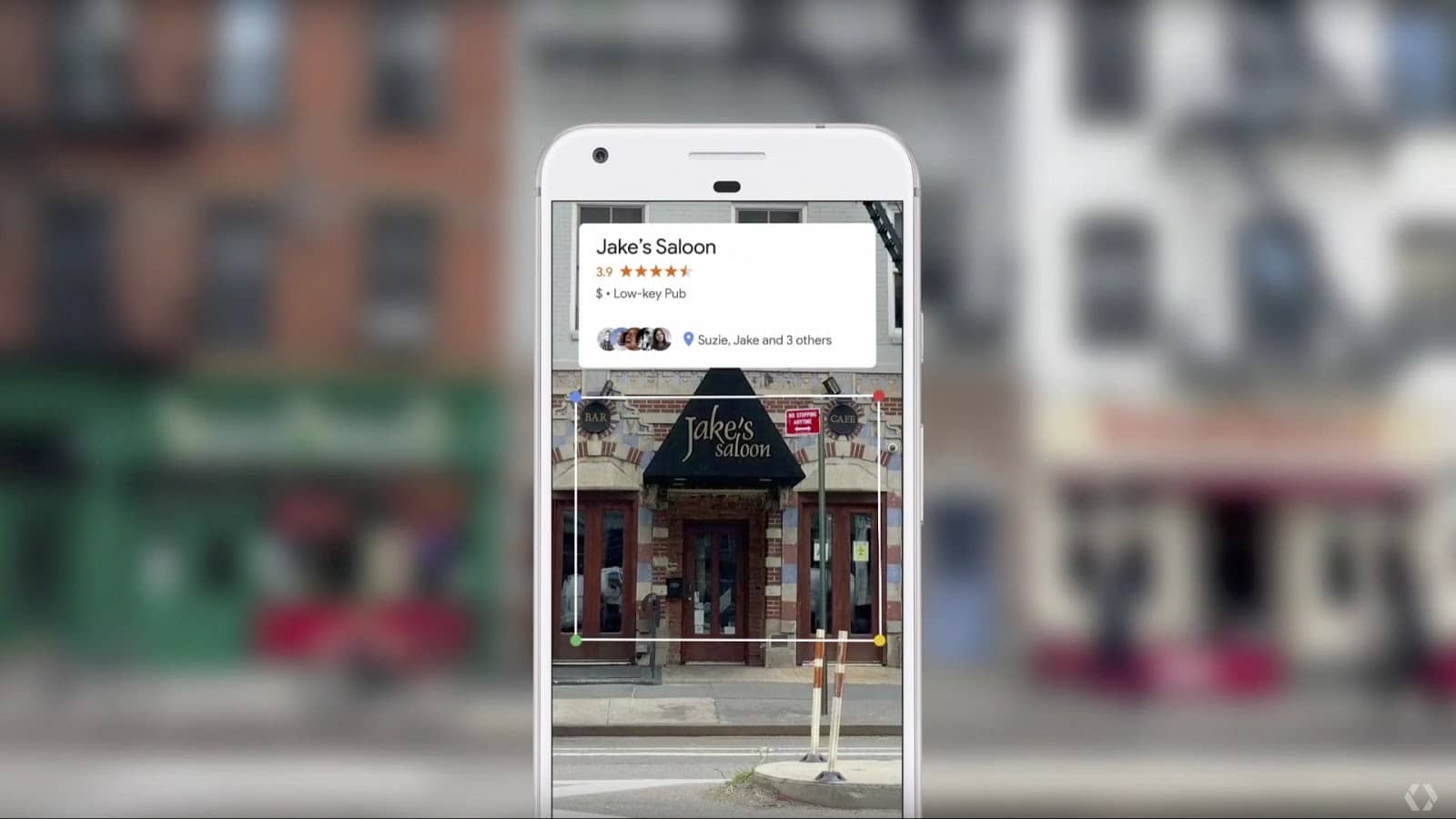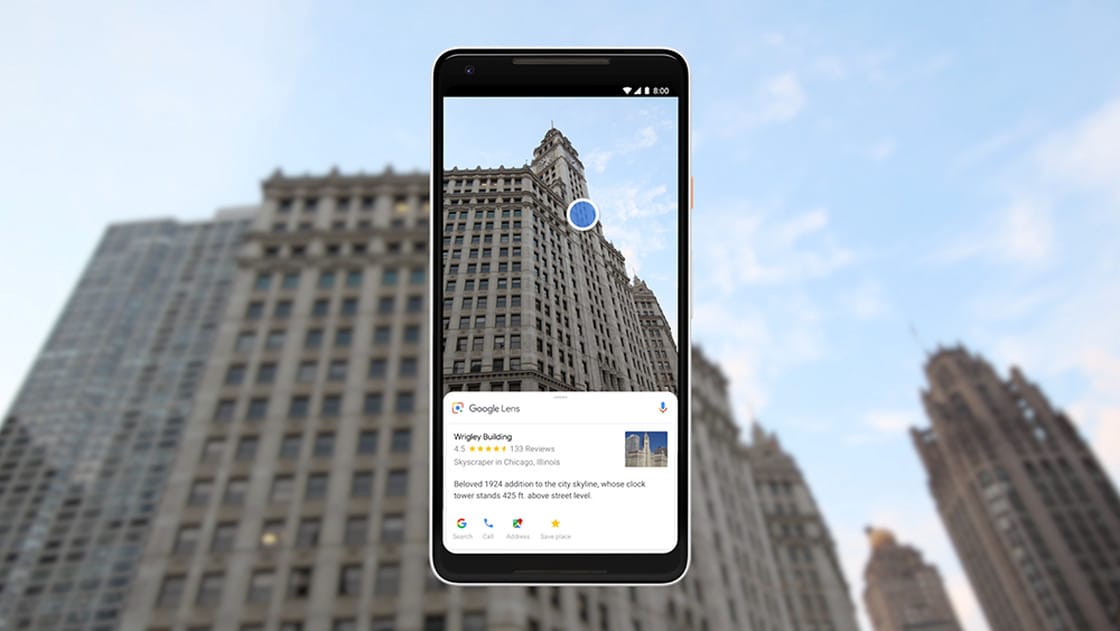
“Trendline” is AR Insider’s series that examines trends and events in spatial computing, and their strategic implications. For an indexed library of spatial computing insights, data, reports and multimedia, subscribe to ARtillery PRO.
Visual search is Google’s main flavor of AR. It’s one way Google wants to future proof its core search business. A more visual front end — via Google Lens and Live View navigation — builds on mobile hardware, computer vision, looming 5G connectivity and gen-Z camera affinity.
As we’ve examined, there are lots of monetizable commerce implications. For example, Google Lens — a.k.a. “search what you see” — has lots of potential for product discovery. Whether it’s style items or storefronts, it’s an intuitive way to contextualize an object by pointing a phone at it.
The storefront example could shine in local discovery contexts, replacing or augmenting the way we currently conduct high-intent proximity searches on smartphones. As background, proximity tends to boost users’ commercial intent in mobile search, along with metrics like cost-per-click.
This is due to the user’s immediacy when searching for things while on the go (on a smartphone) and nearby (ready to transact). This principle has caused Google to lean into local search (Google Maps, Google My Business) along with smaller players like Yelp and Foursquare.
Back to visual search, this principle of intent and relevance correlating to proximity could be a significant value driver in AR. When holding up your phone to contextualize an item or a local business with Google Lens, the search subject isn’t just nearby… it’s literally within view.

Visual UGC
Last week, a Google patent filing added new dimension to this discussion. It filed for intellectual property around virtual “graffiti” that users can create in ways that are then discoverable and consumable by others. At first glance, this seems recreational but it could be more of a utility.
In other words, could it engender a sort of visual user-generated content? This gets back to local search and discovery, particularly around the area of local reviews, a la Yelp. Google has been trying to gain share in this area for years as part of its overall Knowledge Graph initiative.
The “graffiti” patent in fact specified this user-reviews scenario which is what got us thinking. According to Business Standard’s summary of the patent filing:
The company in its patent specification filed with the Patent Office says that with virtual graffiti, if one may wish to leave a message for his or her friend to try a particular menu item at a restaurant, the message may be virtually written on the door of the restaurant, and left for the second user to view. When the friend visits the restaurant, he or she will receive an indication that virtual graffiti is available for their view. The message will then appear to them on the door of the restaurant when viewed with an augmented reality system.
Just as Google’s local search strategy depends on user-generated reviews, could that apply in a visual search world? Could users’ digital markings left on physical places be a valuable content source for the “Internet of Places“? If so, conditioning behavior and seeding activity makes sense.
It’s also worth noting that this is an IP filing in India, where there are obviously demand signals, user behavior and other factors that are unique to the region. Our minds go to some of the above applicability in western markets, but it could have an outcome that’s different entirely.

Cloud Anchors
As further background, this builds on other Google AR tech including ARCore, VPS, and cloud anchors. The latter stems from the AR cloud principle of image persistence. That is, placing a virtual graphic in a real-world location and having it stay there for others to interact with later.
This principle — and AR in general — are inherently “local.” Not only can graphics or informational overlays add relevance to physical-world items, but their very placement can communicate location-based relevance. This hinges on image persistence with millimeter accuracy (enter 5G).
That gets back to the “graffiti” patent filing. It could signal some local-commerce relevant tools on the road map. Or, like many patent filings, it could be an experimental red herring. But meanwhile, it’s a valuable thought exercise to pull on that string. What AR use cases could this bring us?
Meanwhile, all of the above unfolds at Google while equally-intriguing innovation happens at smaller companies. Ubiquity6 last week announced the studio editor component of it’s previously announced display.land, which offers tools to create shared and persistent AR graphics.
Finally, background for local search speculation (Google, Yelp, Foursquare, etc.) comes from analyst coverage before focusing on spatial computing. Mobile local commerce was this analyst’s “beat” for about a decade. It’s a considerable point of interest to now see these worlds collide.
For deeper XR data and intelligence, join ARtillery PRO and subscribe to the free AR Insider Weekly newsletter.
Disclosure: AR Insider has no financial stake in the companies mentioned in this post, nor received payment for its production. Disclosure and ethics policy can be seen here.
